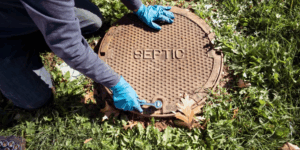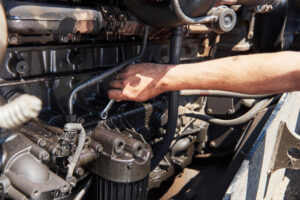An HVAC system plays a crucial role in maintaining a comfortable and productive atmosphere in any commercial building. However, like any mechanical system, HVAC units are prone to common problems that can lead to inefficiencies, increased expenses, and potential breakdowns. Identifying these problems and knowing how to resolve them is essential for business owners and facility managers who wish to optimize system performance and extend its operational life. Below are some of the most common HVAC problems and their solutions.
1. Clogged or Dirty Air Filter
Problem:
One of the most frequent HVAC problems is a clogged or dirty air filter. As filters accumulate dust, dirt, and debris, they restrict airflow, making the HVAC system work harder. This not only results in higher energy consumption but also reduces overall system efficiency.
Solution:
Regularly inspect and replace air filters to maintain proper airflow and system performance. In environments with heavy foot traffic, pets, or allergies, it is recommended to replace filters every three months to keep the system running efficiently.
2. Thermostat Malfunctions
Problem:
A faulty thermostat can lead to temperature inconsistencies or prevent the HVAC system from activating. Problems can stem from dead batteries, incorrect settings, or an outdated model.
Solution:
Start by replacing the thermostat batteries if necessary. Make sure the thermostat is set to the correct mode and temperature. If the problem persists, upgrading to a programmable or smart thermostat may help improve energy efficiency and temperature control.
3. Refrigerant Leaks
Problem:
Refrigerant is essential for the cooling process in HVAC systems. A refrigerant leak can impair the system’s ability to cool effectively, leading to increased energy consumption and possible system damage. Signs of a leak may include ice buildup on coils or a hissing sound.
Solution:
Refrigerant leaks require the expertise of an HVAC technician. A professional will locate and fix the leak, then recharge the system with the appropriate refrigerant, restoring its cooling capacity.
4. Frozen or Dirty Evaporator Coils
Problem:
Evaporator coils are responsible for absorbing heat and cooling indoor air. When these coils become dirty or freeze, the system’s ability to cool the space efficiently is compromised, leading to reduced performance and potential damage.
Solution:
If the coils freeze, turn off the system and allow them to thaw. Regular cleaning of evaporator coils can help prevent this problem. Scheduling annual HVAC inspections can ensure that coils remain clean and functional.
5. Blower Motor Failures
Problem:
The blower motor circulates air throughout the building. When the motor malfunctions, airflow may be weak or absent. This can be caused by electrical problems, dust buildup, or worn-out motor components.
Solution:
Check the air filter, as a clogged filter can strain the blower motor. If the problem persists, inspect the circuit breaker to ensure it hasn’t tripped. If necessary, contact an HVAC technician to diagnose and replace faulty blower motor components.
6. Clogged Drain Line
Problem:
The HVAC system’s drain line removes moisture from the air. Over time, it can become clogged with debris, mold, or algae, leading to water leaks and potential property damage.
Solution:
Prevent clogs by periodically flushing the drain line with a mixture of vinegar or bleach and water. If the line is already blocked, use a wet/dry vacuum to clear the blockage, or call an HVAC technician to resolve the problem.
7. Electrical Problems
Problem:
Electrical problems, such as faulty wiring or malfunctioning capacitors, can cause the HVAC system to malfunction, causing it to cycle on and off or stop functioning entirely.
Solution:
Check the circuit breaker to ensure it hasn’t tripped. If the problem continues, an HVAC technician should be contacted to inspect and repair any electrical components.
8. Unusual Noises
Problem:
Unusual noises such as banging, rattling, or squealing may indicate loose parts, worn-out belts, or motor problems within the HVAC system.
Solution:
Turn off the system and check for loose parts or debris that may be causing the noise. If the noise persists, schedule an inspection with an HVAC technician to diagnose and repair the problem.
9. Uneven Heating or Cooling
Problem:
Uneven temperatures throughout the building may signal problems with airflow, ductwork, or an improperly sized HVAC system.
Solution:
Ensure that all vents are open and unobstructed. Check the ducts for any leaks or damage. If the HVAC problem persists, consult a technician to determine if the system is correctly sized for the space.
10. Furnace Ignition Problems
Problem:
Gas furnaces rely on ignition mechanisms to start. If there is an issue with the pilot light, thermocouple, or gas supply, the furnace may fail to produce heat.
Solution:
Check the pilot light to ensure it is lit. If the light goes out, there may be an issue with the thermocouple or gas supply. In this case, an HVAC technician should be called to inspect and repair the furnace safely.
Conclusion
Regular maintenance is crucial in preventing many common HVAC problems. By routinely replacing air filters, scheduling professional inspections, and addressing minor problems early, businesses can ensure that their HVAC systems remain efficient and reliable year-round. For more complex problems, it is essential to consult with an experienced HVAC contractor for accurate diagnosis and repair.
Proactively addressing HVAC system problems helps businesses maintain a comfortable and productive environment while boosting energy efficiency, reducing operational costs, and extending the lifespan of the system.






